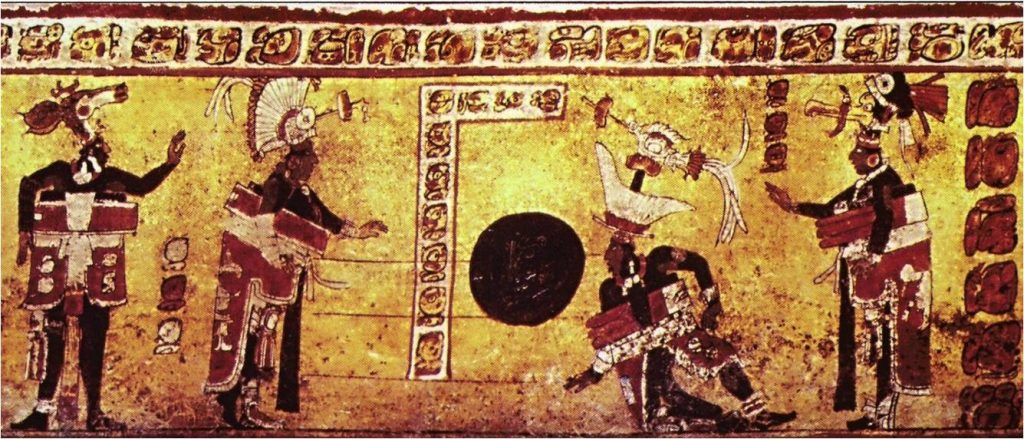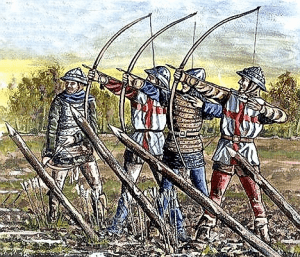El juego de pelota, dating back to 1500 BCE, is known as the oldest ball game ever created in human history. It was played across many Mesoamerican civilizations and recognized as one of the most solemn events of that time. The game held religious, social, political, and ritualistic significance unlike any other. This sport was more than just a game, but quite frankly, it was an event that often resulted in life or death.
The origins of this game are not precisely known, but many historians believe its first appearance to have derived from the Olmec society, the first major civilization in Mesoamerica.1 The Olmecs, who inhabited the gulf coast of Veracruz, were recognized for their development of latex in the pre-classical era. In fact, many game balls consisting of latex have been recovered from the region and have led historians to believe this evidence to be the origins of this great, ancient game. As millennia have gone by, several different Mesoamerican civilizations have adopted this sport and created their own unique styles of play. However, the general idea of the game was never changed.
The ball game consisted of two teams, ranging between two to four players. The players would wear protective garments and sometimes dress up in representations of an animal. Depending on the situation and culture, players would compete on uniquely structured ball courts. On game-day all members of the society would gather around with excitement for the big match up. Unfortunately, this was no light matter, and nothing close to our typical spectator-sports.2
There has been approximately thirteen-hundred courts discovered, from the state of Arizona to the southern most parts of Paraguay. These courts were comprised of a large, flat field with two walls on each side. Typically, these walls would be slanted. However, with many different cultures, these ball courts were not all the same across the geographic regions. However, they all had one thing in common: a ring mounted on the wall (whether it was flat or slanted). This large stone ring (on both sides), standing high and tall on the wall, would be the area where the players would aim to score. The goal of the team was to hit the rubber ball, without using their hands, into the mounted ring. In order to hit the ball, they would propel their bodies and fling their hips. This difficult motion made the game a challenge, and it was only capable of being played by a select few of each society.3

Unlike any other game, it was made up of tactical movements rarely seen in today’s professional sports. Players risked severe injuries by throwing there bodies across the stone court. In addition, the impact of the rubber ball could cause horrible bruising, often leading to internal bleeding, and possibly even death. If the game did not kill the player, the outcome certainly could. Due to the game’s religious nature, players who lost the match would often be sacrificed to the gods and killed in a ceremonial event.4
This game was a big influence across societies in Mesoamerica. It was not only a sport, but a highly regarded event. The Mayans considered it an opening to the underworld and intertwined the sport with mythological significance. The cost of losing would conclude in a sacrificial act; in this way, members of the society were able to keep their gods happy and ultimately balanced. As time went by, when the Aztecs adopted the game, it was seen as a problem solver. Players would compete on the stone courts, fighting for hierarchy and dominance. This formal competition would also lead to solving political conflicts. It was a great act of gamble, and certainly one with great significance.5
No matter the society, this game left a most distinctive resonance. It endured through many civilizations as the centuries went by, and created a sport with rich meaning. Whether through the symbolism of mythological gods or simply for the sake of competition, this ball game left details and stories of the once great civilizations of Mesoamerica. Although today’s evidence is limited, the message given across these magnificent stone courts is clearly shown.
- Jeffrey P. Blomster, “Early Evidence of the Ballgame in Oaxaca, Mexico,” Proceedings of the National Academy of Sciences of the United States of America 109, no. 21 (2012): 8020–25. ↵
- Salem Press Encyclopedia, January 2015, s.v. “Mesoamerican Ball Game,” by David A. Crain. ↵
- Colleen P. Popson, “Extreme Sport,” Archaeology 56, no. 4 (October 9, 2003): 42–48. ↵
- Zaccagnini Jessica, “Maya Ritual and Myth: Human Sacrifice in the Context of the Ballgame and the Relationship to the Popol Vuh” (Honors Thesis, Southern Illinois University Carbondale, 2003), 2-11. ↵
- World History Encyclopedia, 2011, s.v. “Mesoamerican Ball Courts – Fusing Game and Religion,” by Alfred J. Andrea and Carolyn Neel. ↵



70 comments
Alondra Lozano
This was a really interesting article. This reminded me of a movie I watched several years ago that involved the ball court, but not the sacrifice. What caught my eye was how the Mesoamerican ballgames were used as a sacrifice and to entertain the gods. It is so interesting how a ball game still brings communities together and people still gamble with them.
Anthony Coronado
What an interesting game, while it may have a brutal history behind it. This game sounds like any other sports game, such as soccer, but without the losers be sacrificed to the gods. This reminds me of the colosseum is a way that it was a crowd cheering a victor in such that the loser would get slain to make the victor be the champion
Amanda Shoemaker
Throughout time there have been so many different types of religious sacrifices and ceremonies but I believe that this one is one of the scariest. The fast that the players chosen would harm themselves to the point of internal bleeding while playing this game, in order to not be sacrificed, is very scary. What’s even scarier is that 1300 courts were found across Mesoamerica.
Melissa Garza
Wow, it’s so crazy that losers of this mesoamerican ball game would be sacrificed to the gods! Though it was interesting to read about this odd game, I don’t think I would risk my life, or being injured just to play it. When I read that the impact alone could cause internal bleeding or even death, I was in shock. I really liked this article, it was interesting and quite fascinating to read about games from the past.
Nathaniel Bielawski
I think this Mesoamerican ball game falls between the Roman Gladiatorial games and modern Basketball. It was both dangerous to the player and required great amounts of skill to get a ball through a hoop. Thankfully, modern ball players aren’t used for religious sacrifices but do sometimes get injured from intense play.
David Castaneda Picon
This is an incredible article, and enjoyable to read! I had the opportunity to visit The Great Chichen Itza Ball Court, and it was amazing, I could only imagine how hard it was to play this game and how difficult must be to score one those rings since the dimensions of the court are enormous. The fact that intrigues me the most about El Juego de Pelota is that it had a deeper meaning than just being a sport, and in fact, for the Mayas in that time it was an honor to be sacrificed to death since only the person who scored for the wining team had the “privilege” to make their Gods happy.
Meadow Arriaga
It’s amazing to think about origins of things we are accustomed to on a daily basis. I never took the time to think when or how the first ball game was played by humans.This ball game is no ordinary game, because the winners become rulers. I think that is interesting way to rank people of superiority. As violent as it seems, I would go back in time to witness it live in action.
Arsema Abera
Wow, this was an interesting article. I was not aware of such sport even existed. What I can not really wrap my mind about is civilization back in time and their association with the gods, also the violence that is always encountered in a game furthermore the sacrifice thig is really interesting. But if I were to go back in time to the Aztecs or to any civilization I think I would watch one or two games just for the fun of it.
Zachary Kobs
What a chilling moment it would be to experience if I put myself in the shoes of a team that just lost their match of “El juego de pelota” and were about to be sacrificed after having sacrificed everything they had to the game. I played varsity football at Ronald Reagan High School and that seems like a fruit cake sport compared to “El juego de pelota”.
Amelia Hew
It’s interesting and scary at the same time that the Mesoamerican ballgame were used to decide who were to be sacrificed to the god and later on was used to assert dominance by the Aztecs. This game is highly dangerous as it causes internal bleeding and even death during the game due to it’s aggressiveness. At least the Aztecs uses the ballgame to decide who were to rule and are not starting a civil war with each other. It would be quite exciting to witness this violet but tactical game.